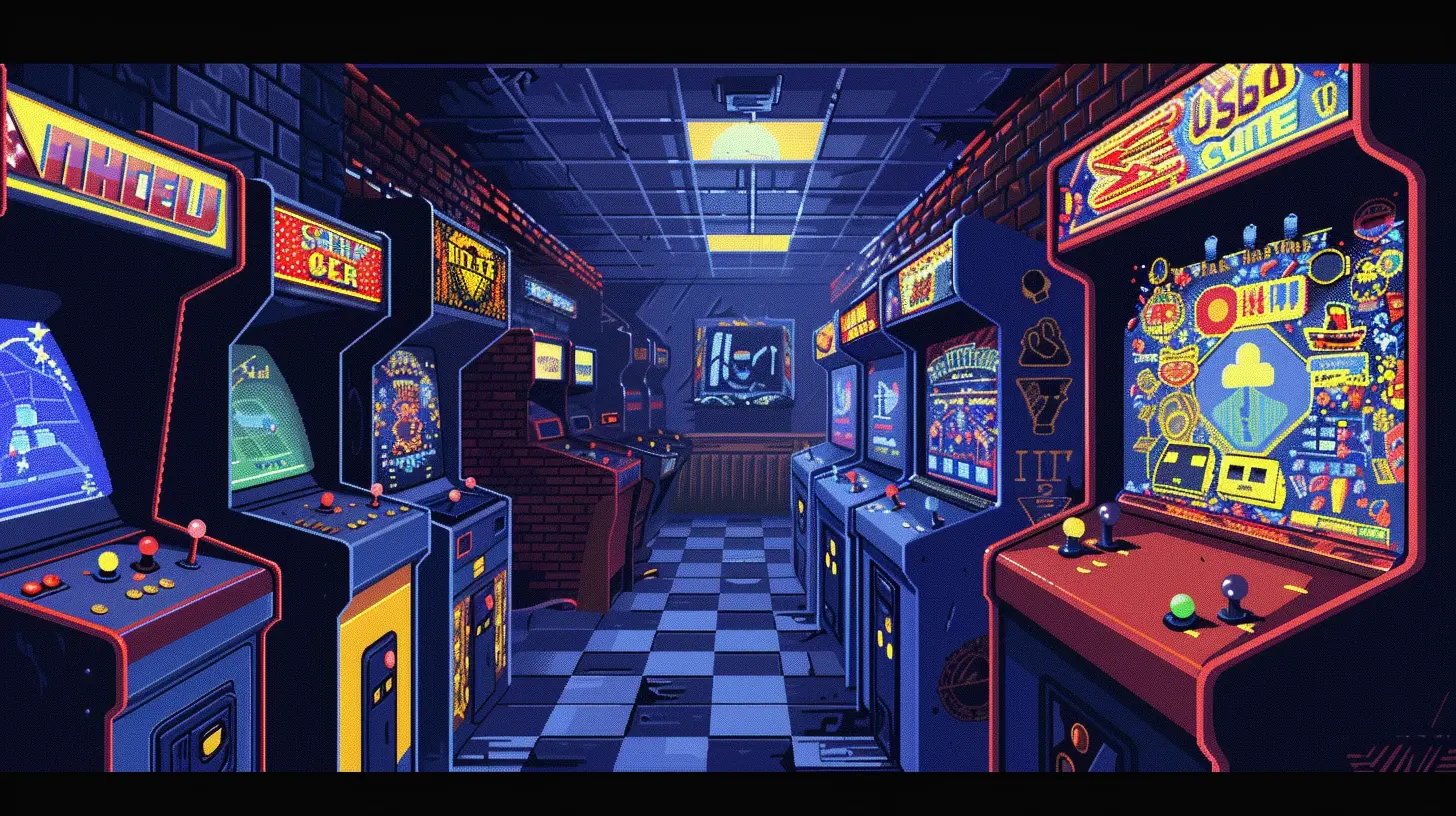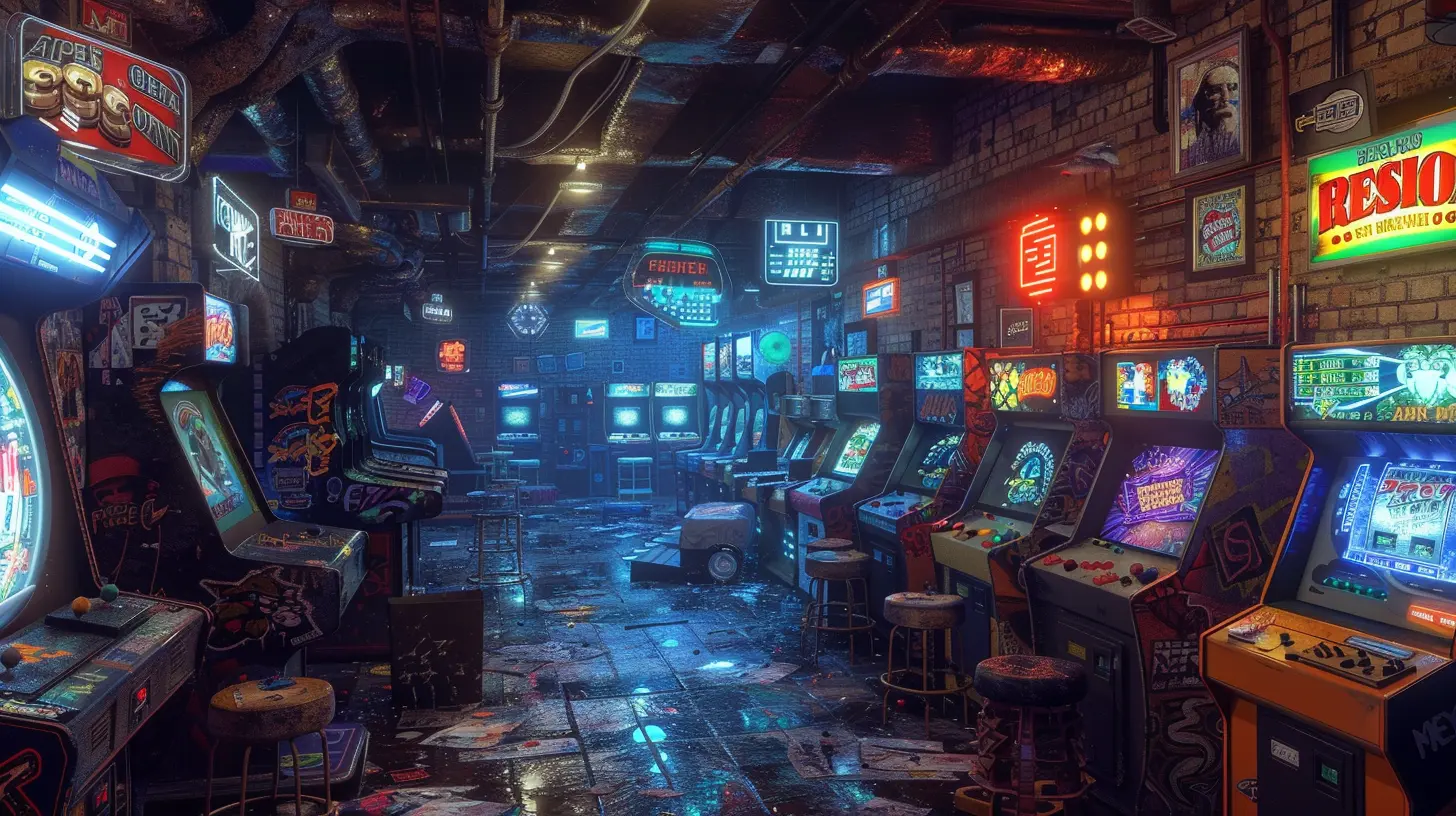The Secret Code: Busting Myths About Arcade Cheats
13 August 2025
Alright, folks. Let’s hop back into the sticky, soda-stained world of arcade cabinets, where quarters ruled and joysticks were our Excalibur. Whether you were hammering that button in a game of Street Fighter or trying to shoot that last alien in Galaga, there was always that one guy.
You know who I’m talking about. That shady character with a bag full of tokens and a “secret” code to get infinite lives, God-mode, or the power to completely wreck your score in seconds.
Now, hold up—was that guy a genius hacker or just full of pixelated baloney?
Today, we’re bustin’ myths, cracking the “secret code," and shining a fluorescent arcade light on the misunderstood world of arcade cheats.
🎮 Myth #1: "Cheating is just entering a secret code."
Ah, the ol’ Konami Code. (Up, up, down, down, left, right, left, right, B, A, start...anyone else feel that muscle memory kick in?)Sure, cheat codes existed, and some were even programmed by developers themselves. But let’s set the record straight here—cheating in arcades wasn’t always as easy as typing a code into the Matrix with your eyes closed.
In reality, arcade machines weren’t designed with cheat codes. Most of them were built to do one thing—take your money. So when people “cheated,” they were often exploiting bugs, using glitchy hardware, or—brace yourself—actually modifying the machine.
That’s right. These weren’t magic codes. They were borderline black-hat wizardry.
🧠 Myth #2: “Only hackers and tech wizards know how to cheat in arcades.”
Nah, you didn’t need to be Neo from the Matrix. Arcade cheats weren’t always high-tech. Sometimes, all it took was a butter knife and a lack of impulse control.Okay, maybe not a butter knife (although I have seen someone jam a coin slot with a paperclip), but the point is—cheating ranged from simple to extreme. Let me break it down:
- Coin jammer: People would insert a token tied to a string (MacGyver, is that you?) and yank it back out after the credit registered.
- Dip switch tweaking: Owners who knew where the settings were could flip little internal switches for extra lives, free play, or test modes.
- Button mashing: Some players found accidental infinite loops or glitches by pure chaotic button-smashing. (Big ups to the wild thumbs out there.)
- Physical machine mods: Some clever (read: sketchy) folks opened cabinets and rewired controls to cheat with macros or set high scores unfairly.
So, yeah. Not exactly rocket science, but definitely some tomfoolery.
💀 Myth #3: “Arcade developers didn’t know about these cheats.”
Oh, they knew. Trust me.Most game devs were like mad scientists in trench coats—they tested, tweaked, and predicted everything short of players standing on their heads while mashing buttons with their feet.
Some cheat codes were even placed intentionally by developers for testing purposes, then quietly left in the final versions. Oops?
Others popped up from unexpected bugs or “happy accidents.” But as these glitches became cult classics (looking at you, MissingNo of the arcade world), some coders just ran with it.
But if you were thinking developers were totally clueless—think again. You better believe they heard all the myths at conventions and in forums with usernames like “Joyst1ckWizard88.”
🤑 Myth #4: “Cheating was about beating the game.”
Ha! That’s adorable.Let’s be real—cheating in arcades wasn’t just about “winning.” It was, nine times out of ten, about saving quarters or flexing on your friends.
It was the financial strategy of broke kids with expensive tastes. Why spend $10 trying to beat Donkey Kong when your buddy swears he can hit the circuit board just right and unlock infinite lives?
Some kids wanted fame—getting that high score so they could punch their initials as “ASS” and giggle at it for months.
Others were just tired of dying at the same boss for the 874th time and wanted sweet, sweet revenge.
🤯 Myth #5: “Real ‘arcade legends’ never cheated.”
Ohhh please.Look, I’m not saying every high score champion had a trick up their sleeve, but I am saying this: some of your favorite arcade legends might’ve been just a teensy bit shady.
Remember when Billy Mitchell—the hot sauce guy who claimed to be the King of Kong—got accused of cheating via emulator and not real arcade hardware?
Legit or not, even the upper crust of arcade royalty has faced heat over questionable tactics.
Real talk: If someone is scoring 999,999 in Frogger while sipping Mountain Dew and casually chatting about their tax returns, you’d be right to raise an eyebrow.
Being an “arcade legend” didn’t always mean playing fair. Sometimes it meant playing smart... or sneaky.
🕵️ Are All Cheats The Same?
Nope. Not even close.Let’s classify the levels of “cheating,” shall we? Because not all cheats wear a black hoodie and lurk in the shadows of your neighborhood arcade.
1. Developer Intention Cheats
These were baked into the game. Think hidden menus, debug modes, or invincibility toggles. Some thought of them as Easter eggs. In these cases, can you really call it “cheating”? (I mean, if the devs wanted you to have it...)2. Exploits & Glitches
Unintended, but widely known. Like walking through walls or activating secret levels with ridiculous controller combos. Not “legal,” sure, but publicly accepted. If half the arcade knows about it, is it still cheating?3. Hardware Hacks
These got sketchy. Players added chips, rewired buttons, or installed memory mods. Definitely not cool with arcade owners, but man, did these make you look unbeatable.4. External Cheats
Coin strings. Magnet tricks. Fake tokens. Real criminal vibes. This was the equivalent of shoplifting, not gaming mastery.So the next time someone says they “cheated,” you better ask what kind of cheater they were. There’s a cheat code hierarchy, and it matters.
💡 Why Did Arcade Cheats Even Become A Thing?
Good question. Let’s wind it back for a sec.Arcades were designed to be hard. Like, pull-your-hair-out levels of hard.
Why? Because hard games = more deaths = more quarters. It was a business model built on heartbreak. And endless Continue screens.
So of course players looked for an edge. It’s like trying to win a hotdog eating contest while someone’s slapping your hands every 5 seconds—you’d find a workaround too, right?
Cheating wasn’t about disrespect—it was about survival. About fighting back against the capitalist coin-munching behemoth.
Kinda poetic, if you think about it.
🚀 Cheat Culture’s Legacy Today
Fast-forward to today’s gaming scene, and cheating still sparks debates hotter than a CPU with no fan.In fact, arcade cheat culture laid the groundwork for modern cheat codes, speedrunning exploits, and even game modding communities.
Whether you were breaking records or bending rules, those old-school arcade cheats helped shape the rebellious, rule-questioning spirit of gamers everywhere.
Is it cheating or innovation? Depends on who you ask. Personally, I like to call it...creative problem-solving.
😂 Funniest Arcade Cheat Stories
You didn’t think I’d let you leave without dessert, right? Here are a few cheat tales that are as real as they are ridiculous:- The Token Tape Trick: One kid wrapped scotch tape around a token, slid it in, got a credit, pulled it back out—and repeated it 50 times before getting caught by the arcade manager. He’s either banned for life or a legend in disguise.
- The "Infinite Jump" Bug in Track & Field: Some smartypants realized slamming two pencils on the run buttons made your character zip across the screen like The Flash. Olympic-level cheating.
- The “Blow on the Button” Tag-Team: Two kids took turns breathing on the over-heated fire button trying to cool it down during an extended Galaga session. The button finally gave out. No regrets.
Arcade hacks weren’t always high-tech, but they were high-laughs.
🧠 Final Thoughts: So, Is Cheating in Arcades Really That Bad?
Look, I’m not here to judge. Okay, maybe a little.But remember this—those “cheats” were often just signs of cleverness, not corruption. Sure, some were plain old cheating. But others were clever workarounds in a system designed to eat your quarters like popcorn.
In the end, whether you were “that guy” with the code, or just the person watching in awe (or horror), arcade cheats were part of what made the scene so unforgettable. They added a layer of mystery and myth to every cabinet.
So, next time you’re playing a retro title and someone says, “Hey, did you know about the secret code?”—smile. You’re not just playing a game. You’re stepping into a legacy of mischief.
And yes, I still remember the Konami Code.
all images in this post were generated using AI tools
Category:
Arcade GamesAuthor:

Francesca West
Discussion
rate this article
1 comments
Daniella Lane
Cheating ruins the fun!
August 17, 2025 at 5:08 AM

Francesca West
I understand your concern! While cheats can change the gameplay experience, they can also open new ways to enjoy and explore games. It’s all about balance and personal choice!


